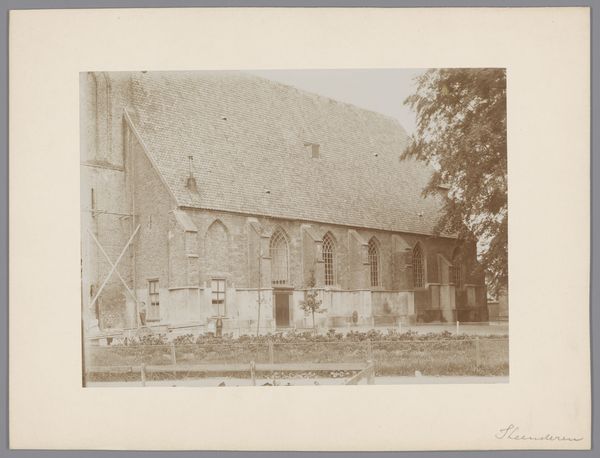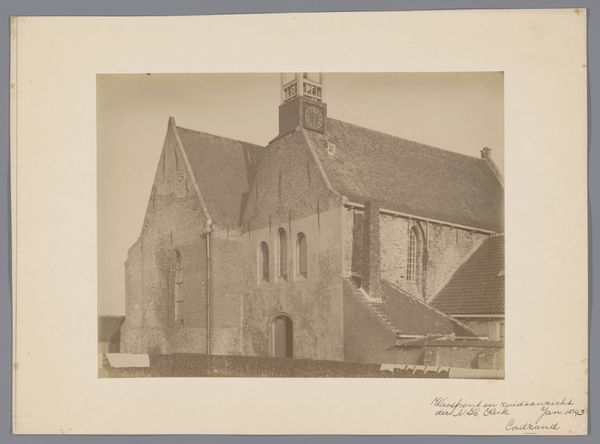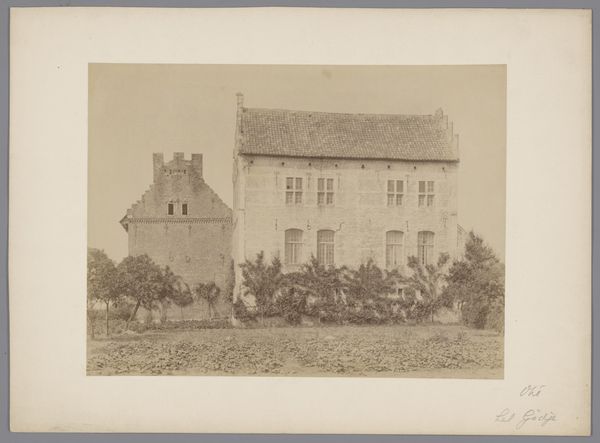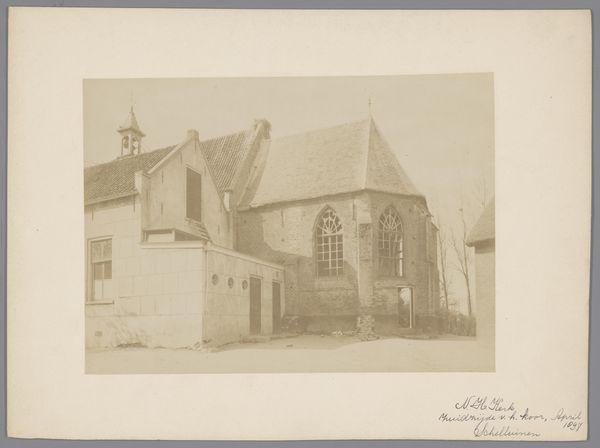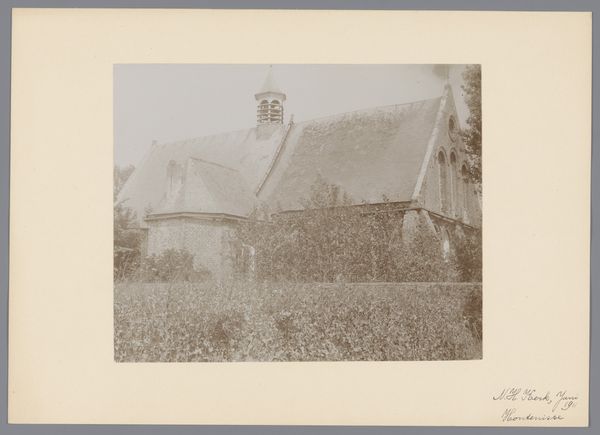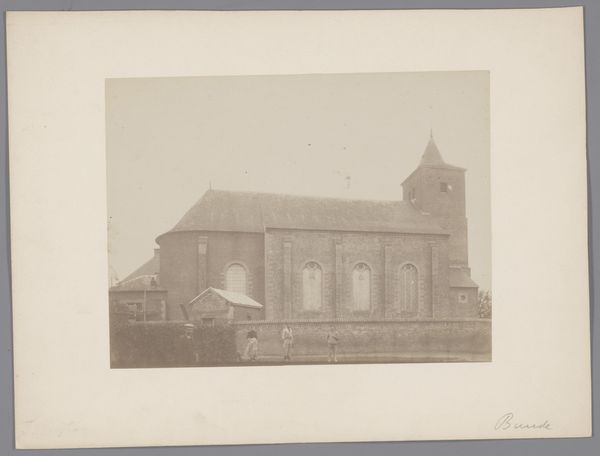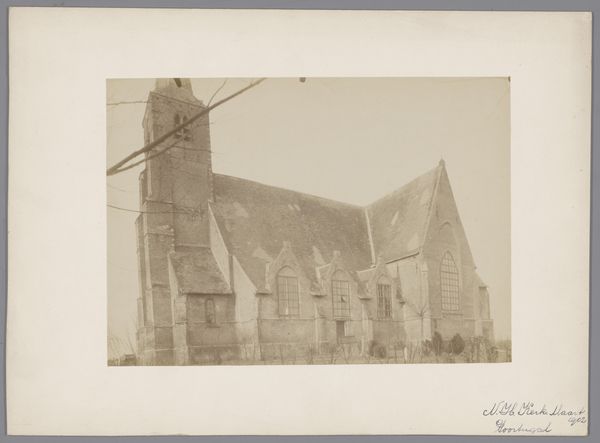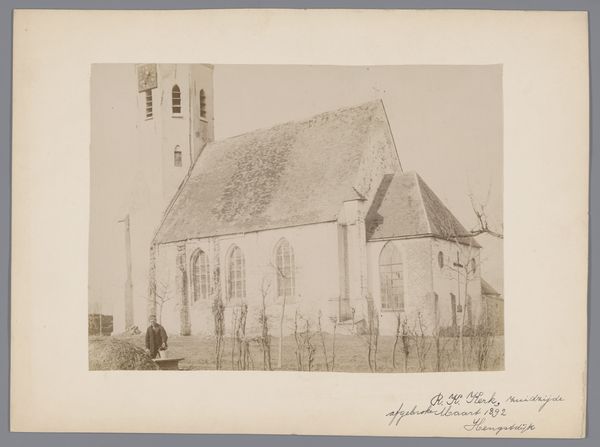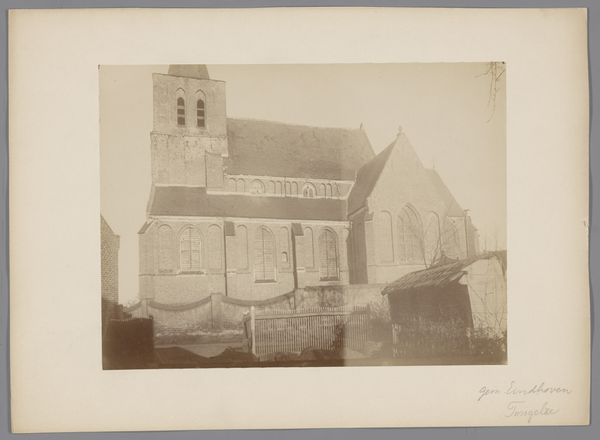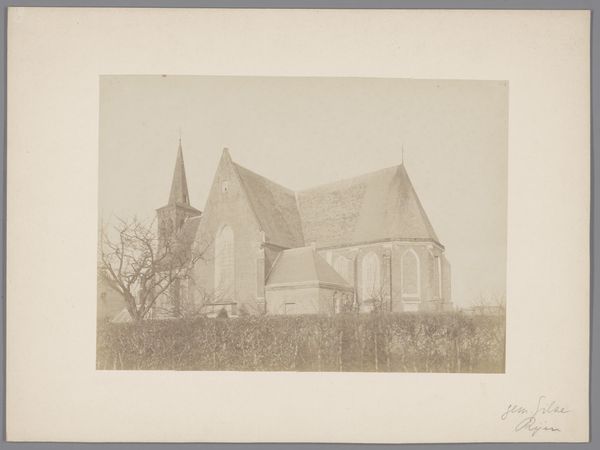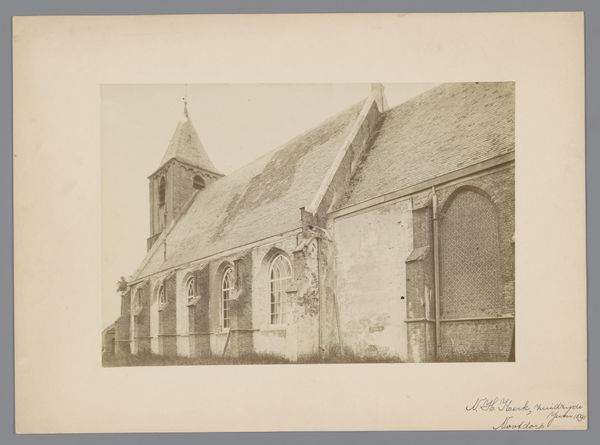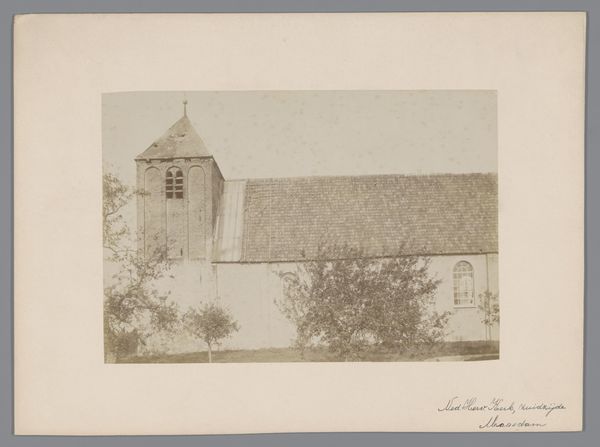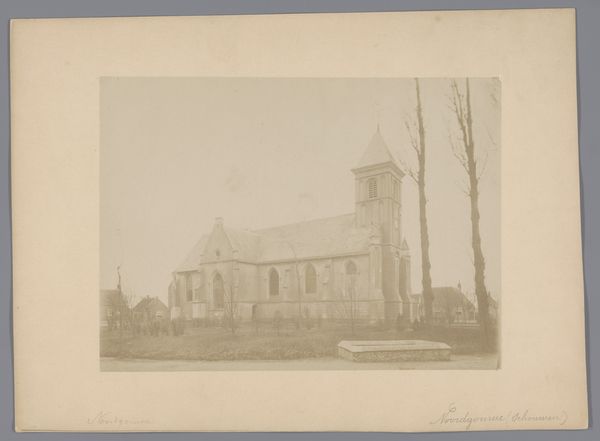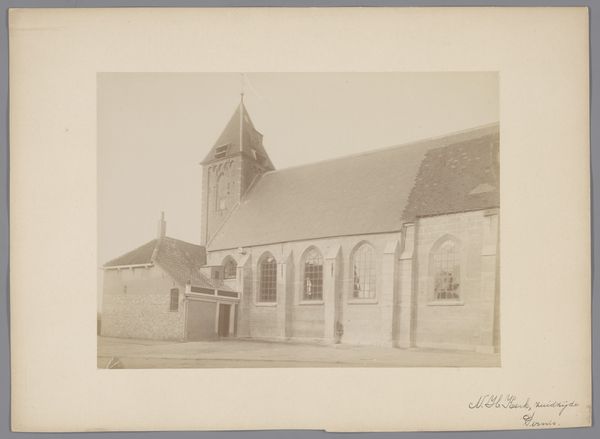
Dimensions: height 170 mm, width 234 mm
Copyright: Rijks Museum: Open Domain
This anonymous photograph captures the Reformed Church in Sint-Annaland. It's printed on fiber-based paper, a material commonly used in early photography for its ability to produce sharp images. This process involves coating paper with light-sensitive chemicals, exposing it to light through a negative, and then developing the image. The sepia tone is characteristic of early photographic processes. Think about the labor involved: from the preparation of the chemicals to the careful timing of the exposure and development. Photography in its early days was a complex blend of science and craft. It democratized image-making, enabling the creation of visual records on a scale previously unimaginable, documenting buildings, landscapes, and people in ways that challenged the traditional dominance of painting. Consider the historical context, where the rise of photography coincided with industrial expansion and a growing middle class. It's a powerful reminder that even the simplest photograph carries within it layers of technological and social significance.
Comments
No comments
Be the first to comment and join the conversation on the ultimate creative platform.
